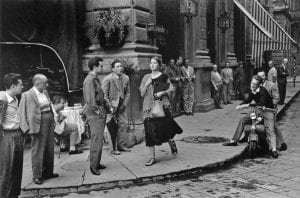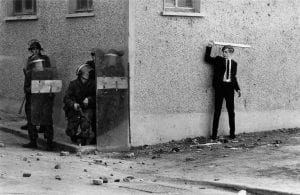 Martin Parr, Chicago, 1997
Martin Parr, Chicago, 1997
Communicative English class on the theme of airports and flying, based around photography and film clips
I teach a lot of business English and often find myself doing lessons about air travel. At the university where I work in France, I also do a lot of general English conversation classes and it is a theme that is often requested. Frequently in the past I have opted for bog-standard lesson plans found online or from a student manual but I have got bored of doing this and wanted to do something more student-led, based around film and photography. Continue reading

 American Girl in Italy by Ruth Orkin, 1951
American Girl in Italy by Ruth Orkin, 1951 Don McCullin, Northern Ireland, The Bogside, Londonderry, 1971
Don McCullin, Northern Ireland, The Bogside, Londonderry, 1971

